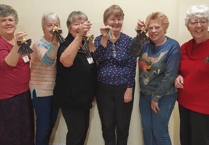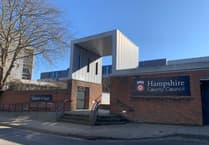In April 1781, when Gilbert White had not long returned to his home in Selborne after a visit to Lambeth and London, he wrote to his niece Molly White thanking her and her father for the “many good offices” that he had experienced while away.
He then continued: “On the road I found the dust very troublesome, yet I got safe to Alton at five o'clock. You need not for the future suffer any inconvenience on similar occasions, for Mr Edwards, the Hants Map-man, is going to make a canal from Chertsey to Alton so that you may come all the way as far as Alton by water.
“Moreover, he intends to bring a canal up to Bishop's Sutton, Bassat's village, from Winton (Winchester), and then to bore a hole for five miles from Alton under Bentworth, Medsted and out at Ropley-dean, and so to make a junction of the Wey, and the Itching.
“You may smile at this proposal, but the projector tells me that the tunnelling part will be the most profitable and easy to be managed, because the chalk, when burnt into lime, and the ashes of 4,000 barges of peat made by the burning, will, at half the present-price of lime and ashes, produce £31,371, besides infinite advantage to the lands! Edwards has published a pamphlet on this subject, to which I refer you, and is to have a county-meeting soon.”
The pamphlet, which had the catchy title ‘An Essay on a Proposed Canal to unite The Rivers Itching & Wey which will make it completely navigable from The Thames to Southampton Bay by The several towns of Chertsey, Guildford, Farnham, Alton, Alresford, Winchester and Southampton’ was written by surveyor J Edwards and can be seen at the Hampshire Record Office (44M69/G1/73). The canal was planned to go between Alton and Ropley.
Nothing more seems to be heard until 1803 when, in a survey by William Betsworthy, the Grand Surrey Canal Extension was planned to include a line from the lock near Ash through Farnham, past Alton and Alresford to the River Itchen and Southampton. This new plan coincided with the start of the Napoleonic Wars when large amounts of goods would be needed in Portsmouth and Southampton - but nothing happened for several years.
Then in 1807, Michael Walker surveyed a similar route from the River Itchen at Alresford, through Alton and Farnham to the Basingstoke Canal or to the Wey Navigation near Godalming - to be called the Southampton and London Junction Canal. This time adverts appeared in the Hampshire Chronicle promoting the latter route. Meetings were held to consider the line of the canal between Alton and Ropley - over the hill near Rotherfield Park via an ‘Iron Rail-Way’ (44M69/K7/39)!
On January 25, 1808, an advert appeared for a ‘Freehold Wind-Mill and Land’ in Hampshire. It was a ‘Roomy and Substantial New Brick-built Wind-Mill … situate about a quarter of a mile from a Market Town, in Hampshire, close to the intended line of the Portsmouth and London Junction Canal, and within 12 miles of five other good Market Towns’.
For further particulars, one had to apply to ‘Mr Trimmer, Attorney, at his Office at Alton, or Farnham’. The only local windmill that fits this description is the one that stood up Windmill Hill here in Alton.
The Hampshire Chronicle reported on February 1, 1808, that there had been a meeting at the Swan in Alton against the canal, with Sir Thomas Miller of Froyle taking the chair.
Many local landowners had invested in turnpikes - toll roads - and did not want their income being reduced, and letters were printed in the papers.
This proposal was then abandoned and, in September, there was notice of an intended Bill to construct a canal from the River Itchen Wharf near Winchester to the Basingstoke Canal Wharf at Basingstoke, going via Winall, the Worthys, Northington and the Candovers. Alton’s ‘canal mania’ was over!





Comments
This article has no comments yet. Be the first to leave a comment.